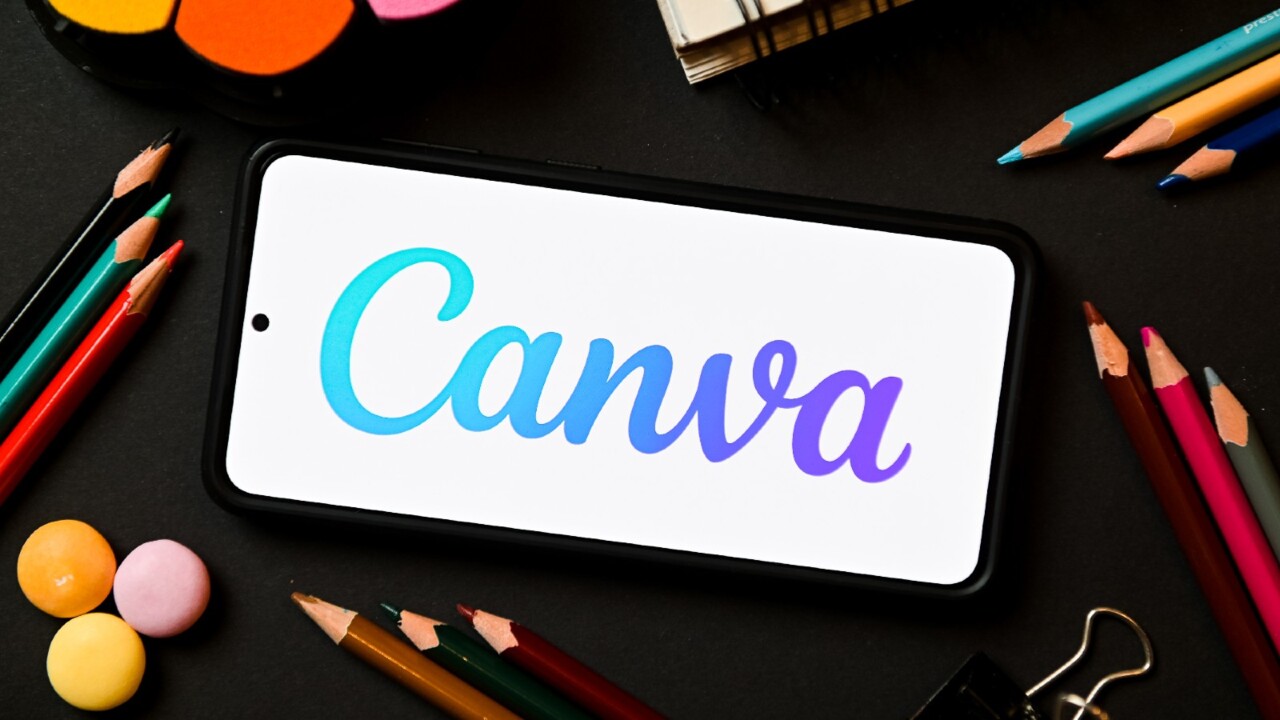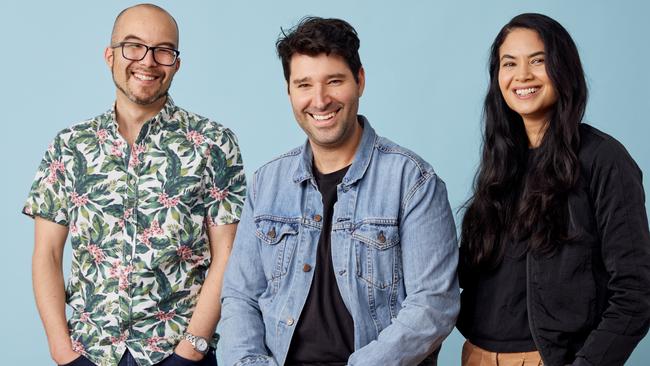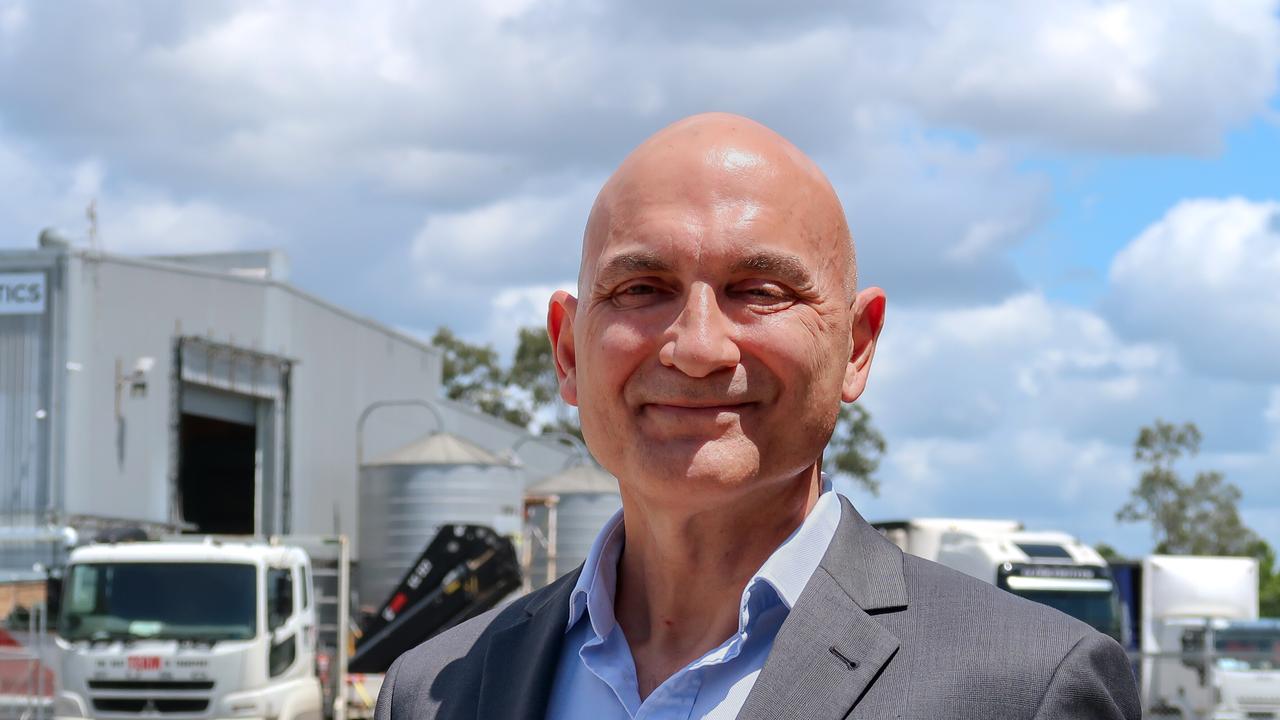Revenue hits $2.5bn but Australian tech darling Canva’s in no hurry for a public float
Visual communications company Canva has topped $2.5bn in annual revenue and has 200 million users but co-founder Cliff Obrecht says that doesn’t mean there’s any hurry for an IPO.

Business
Don't miss out on the headlines from Business. Followed categories will be added to My News.
Canva has achieved “massive acceleration” in its efforts to take on the lucrative enterprise market, achieving 300 per cent annual growth among business customers with revenue topping $2.5bn, co-founder Cliff Obrecht says.
Investors have been anticipating a much-hyped US listing, with Canva following Atlassian’s lead, and the company made some of its staff instant millionaires after an oversubscribed share sale earlier this year.
But Mr Obrecht said there were no immediate plans to launch a public offering.
“At some point we’ll IPO. There’s no big rush. It will happen in the coming years, no doubt. But it won’t happen this year,” he said.
Mr Obrecht said the $40bn visual communications company was making solid progress on its goal to hit one billion active monthly customers and its user base had exceeded 200 million.
“We’ve added 100 million in the last two years. And when you compare our growth over the last three months, we’re orders of magnitude bigger,” he said.

Annualised revenue is now more than $2.5bn, a 13.6 per cent jump from when the company released its previous figures earlier this year. Its corporate customers include the New York Stock Exchange, Atlassian, Hewlett Packard, Ray White, DHL Express, Tecnocasa and Docusign.
Canva has redesigned its entire platform to take on the lucrative enterprise market and turbocharge its revenue.
In its latest product release, Dream Lab, it integrated artificial intelligence features from Sydney-based Leonardo.ai, which it acquired for an undisclosed sum in July.
The integration took about eight weeks. It uses Leonardo’s AI model to “effortlessly turn a kernel of an idea into a spectacularly vibrant output in unprecedented ways”.
This includes creating 3D renders and illustrations, generating stock photos in a company’s style, and photorealistic portraits via simple verbal prompts.
“There is a lot more coming on that particular feature, like a lot of richness, and that’s really us putting our foot in the door on a full image, AI editing suite – so it’s very powerful,” Mr Obrecht said. “It’s early, and you’ll see when you use it it’s got a few ‘coming soons’. There is a long tail of really exciting things that will be delivered in the coming months and early next year that are currently being worked on by the Leonardo and combined Canva team.”
Canva’s strategy to take on the corporate market seeks to rein in the number of people who were using its products via non-official or enterprise-grade channels, which Mr Obrecht said led to chief information officers “pulling their hair out”.
“BYO AI tools” has become a big concern for companies. A Microsoft survey found 78 per cent of Australian workers who use AI were doing so on personal subscription plans.
“We have 95 per cent of Fortune 500 companies using Canva at scale. So it’s not that we’re not being used in these large organisations,” Mr Obrecht said.
“We’ve been making hundreds and hundreds of millions of revenue from the enterprises but that’s all been self-serve, credit card swipes.
“That’s why we created the enterprise SKU (stock keeping unit) because CIOs were pulling their hair out, saying ‘we’ve got like 20,000 users of Canva in the organisation we can see, so we need official security, data residency, we need that tail of robust of enterprise features that make us compliant’.”

But this was mainly a formality and a chance to negotiate corporate contracts rather than preventing data-leakage, as happened when a Samsung software engineer uploaded sensitive internal source code to ChatGPT earlier this year.
“We provide assurances for all our customers. We have probably got the strictest AI policies around sharing of data. We do not train on any customers’ data, unless you actively opt in,” Mr Obrecht said.
“We’re opt-out by default. That’s probably the opposite to most companies.
“We have our AI content indemnity, called Canva Shield … because we know how our models have been trained. We know the risks involved and the fact they won’t be sued because of the way we train and serve our AI models, so we’re happy to take that risk on their behalf.”
Since launching Canva’s Visual Suite two years ago, more than 2.5 billion presentations have been created – or 1500 every minute – and 1.5 billion videos, or more than 1000 a minute.
It has been stepping up its AI design prowess as Microsoft nips at its heels, launching its own visual communications app this year.
In a veiled swipe at the tech behemoth, Mr Obrecht said Canva aimed to make design enjoyable.
“We’ve got this fundamental belief that work should be fun; and when it comes to visual communication the data proves that engaging rich media visuals gets customers – and as a business, if you try to choose a visual communication tool, you want to choose one that has the best chance of engaging your customers, being internal or external,” he said.
More Coverage
Originally published as Revenue hits $2.5bn but Australian tech darling Canva’s in no hurry for a public float





